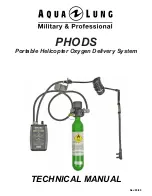
Sensor Configuration
R&S
®
NRX
108
User Manual 1178.5566.02 ─ 05
Remote command:
CALCulate<Measurement>[:CHANnel<Channel>]:BURSt:TIMing:EXCLude:
STARt
CALCulate<Measurement>[:CHANnel<Channel>]:BURSt:TIMing:EXCLude:
STOP
9.2
Correction Settings
Access:
"Measurement Settings" > "Primary Sensor Config" > "Correction"
"Measurement Settings" > "Secondary Sensor Config" > "Correction"
Available for all measurement types.
Offset corrections
Add a fixed level offset in dB to compensate for external losses or gains. If you take the
attenuation of an attenuator located ahead of the power sensor or the coupling attenu-
ation of a directional coupler into account, use a positive offset. That means the power
sensor calculates the power at the input of the attenuator or the directional coupler. If
you want to correct the influence of an amplifier connected ahead, use a negative off-
set.
S-Parameter corrections
Used to compensate for losses and reflections introduced by a two-port component
that is attached to a power sensor, such as an attenuator, directional coupler, or match-
ing pad. Using S-parameters instead of a fixed offset increases the measurement
accuracy, because the interaction between the power sensor and the component is
considered. For information on how to proceed, see the user manual of the power sen-
sor.
S-Gamma corrections
Using the complex reflection coefficient, you can determine the power delivered by the
signal source with considerably greater accuracy. For information on how to proceed,
see the user manual of the power sensor.
Correction Settings
















































